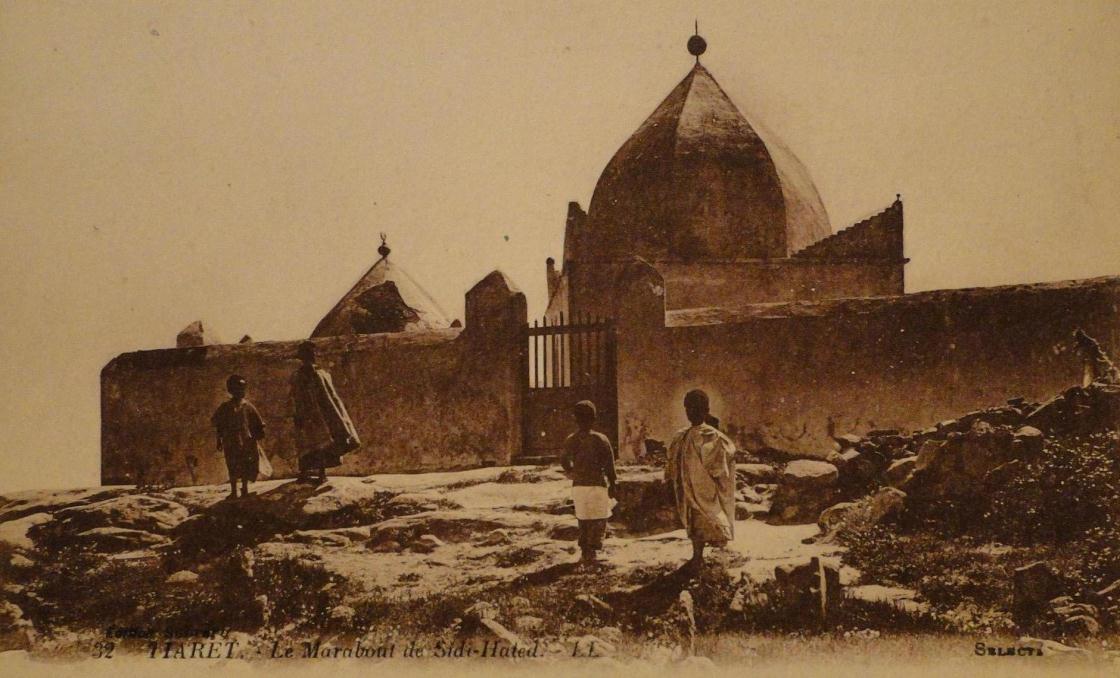Vie scientifique | Colloques internationaux
The Making of Saints in the Muslim World in the 20th Century
Conveners : Michel BOIVIN, Pedram KHOSRONEJAD, Pierre-Jean LUIZARD, Thierry ZARCONE
From the early beginning of Islam, the saints have never ceased to play an essential role in popular piety. As an intermediary between the believers and God, the saint is supposed to serve, thanks to his miracles and his blessing, the destiny of the world and to answer to the spiritual and day-to-day needs of every Muslims, whether kings or humble people. The cult of saints reflects however very diverse and varied aspects due to the influence of the cultural and geographical milieu into which the saints has emerged. In addition, the veneration of saints and the pilgrimage to their tombs have neither disappeared, nor they have declined at modern times, despite the pressure of the reformist governments who fought superstitions. On the contrary, no even the veneration of saints has continued in the whole of the Muslim world (with the exception of Saudi Arabia where radical Islam - Wahhabism - has fiercely eradicated it), but it has in the course of time became dominant in some areas, while in other places it has regenerated itself and gave birth and is still giving birth to new saintly figures. It is worth mentioning here the names of Shaykh Alawi (1869-1934) in Algeria who has converted Europeans to Islam, of Ahmadou Bamba (m. 1927) in Senegal of whom devotees called “murid” have erected a mausoleum and built a sacred city named Touba in 1928 (now the second city in the country), and of Said Nursi (d. 1960) who got thousands of devotees in Turkey. New saintly figures exist also in the Indian subcontinent and in the Indonesian archipelago. Similarly, saint veneration has experienced a revival in the former Soviet Republic of Central Asia since 1991, and in the Muslim provinces of China (Xinjiang, Gansu) after the Cultural Revolution.
The making of the new saintly figures, however, poses many problems to which this conference will try to answer.
– What means sainthood and saint in contemporary Muslim world? Is there a new definition of sanctity, wider that those used until now? For example, in Iran, the “national saint” is a new phenomenon, reflecting a certain “secularisation” of sanctity, as is the martyr in the Iran-Irak war who has became a saint with the support of the Islamic Republic.
– Is the typology of the new saintly figures distinct from the classical typologies which distinguish: 1. Biblical and Quranic prophets, and Shi’i imams; 2. propagators of Islam, i.e. martyrs and heroes; 3. Mystics or Sufis; 4. kings?
– Under which conditions the new saintly figures are emerging, given that the social and political context in the Muslim world have changed and were transformed by the reforms: Nation-States and/or secular Republics; Islamic states; Communist states? Is the veneration of saints still associated to a pilgrimages at a tomb, following a specific ritual? And is this ritual inherited or reconstructed, not to say entirely recreated?
– What is the spiritual, social and political role played by these new saintly figures?
– What is the link of the new saintly figures with the past and how the devotees write the history of these saints in the ‘short term”, i.e. in the press and journals, and in the “long term” (longue durée), i.e. on books? Is the history of all these saintly figures put down on the paper, and in which way: neo-hagiography? Does it exist also a “moving hagiography,” i.e. a film/documentary where the life of the saint is “put down” on an audio-visual support?
Besides, all these questions which have until now rarely drawn the attention of the researchers, will help us to define what is Islam nowadays, considering the fact that saint veneration and pilgrimage to the tombs of saints were and are still today one of the most notable forms of devotion in the Muslim world, from Morocco to China and Indonesia, and that it is also quite influential in spirituality as much as in society and politic.
Document(s) à télécharger
Les sites du CEIAS
- SAMAJ | The South Asia Multidisciplinary Academic Journal
- CEIAS - Facebook
- CEIAS - Twitter
- CEIAS - Newsletter
- Le Bulletin de la Bibliothèque
- Régionalisme & cosmopolitisme
- DELI | Dictionnaire Encyclopédique des Littératures de l’Inde
- DHARMA | The Domestication of “Hindu” Asceticism and the Religious Making of South and Southeast Asia
- TST | Texts Surrounding Texts
- STARS | Studies in Tamil Studio Archives and Society 1880-1980
- I-SHARE | The Indian Subcontinent’s Shared Sacred Sites
- Sri Lanka et diasporas
- Sindhi Studies Group
- Carnet du Master Études asiatiques
- Master “Asian Studies”
- Social Sciences Winter School in Pondicherry
- Caste, Land and Custom
- Musiques indiennes en terres créoles
 Actualités
Actualités
Devenir juifs : conversions et assertions identitaires en Inde et au Pakistan
 Débat - Mardi 9 mai 2023 - 14:00Présentation« L’an prochain à Jérusalem ! », scande un homme portant une kippa dans une synagogue de Karachi au Pakistan. Ses paroles sont répétées en chœur par les membres de sa communauté, un groupe comptant près de trois cents personnes qui s’autodésignent par (...)(...)
Débat - Mardi 9 mai 2023 - 14:00Présentation« L’an prochain à Jérusalem ! », scande un homme portant une kippa dans une synagogue de Karachi au Pakistan. Ses paroles sont répétées en chœur par les membres de sa communauté, un groupe comptant près de trois cents personnes qui s’autodésignent par (...)(...)
Le Centre d'études sud-asiatiques et himalayennes (Cesah), nouveau laboratoire de recherche (EHESS/CNRS) sur le Campus Condorcet
Échos de la recherche -Depuis le 1er janvier 2023, l'EHESS, en tant que co-tutelle, compte un nouveau centre de recherche né de la fusion du Centre d'études de l'Inde et de l'Asie du Sud (CEIAS - EHESS/CNRS) et du Centre d’études himalayennes (CEH - CNRS) : le Centre d'études sud-asiatiques et h (...)(...)
Centre d'Études de l'Inde et de l'Asie du Sud
UMR8564 - CNRS / EHESS
54 boulevard Raspail
75006 Paris, France
Tél. : +33 (0)1 49 54 83 94
Communication :
nadia.guerguadj[at]ehess.fr
Direction :
dir.ceias[at]ehess.fr
La bibliothèque du CEIAS
Maison de l'Asie
22 avenue du Président Wilson 75016 Paris
54 boulevard Raspail
purushartha[at]ehess.fr



